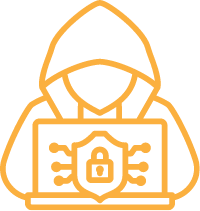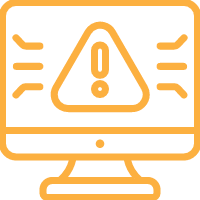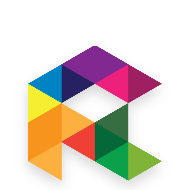The past year has been interesting. After an undeniably tough 2020, in 2021 we saw COVID-19 vaccinations being rolled out, bringing with it anticipation that things would be a little different this year. And in many industries, they were.
But when it comes to technology, the pace of change rarely pauses and is never disrupted. Rather, it is technology that disrupts, forcing us to adopt innovative approaches to established practices and helping businesses move forward.
With that in mind, we wanted to start the new year by looking back at some of the top tech trends of 2021, and what they mean for businesses and how we can help.
Automation
Although the most prominent aspect of automation is industrial–the use of robotics for manufacturing–it isn’t the only business process that can be automated. And automation is not about replacing people; it’s also about automating and streamlining repetitive tasks, freeing employees to focus on other aspects that can’t be automated.
Consider how much time you, or our employees, spend on scheduling resources or jobs that also need to include route planning. Automating this not only allows you or your employee to focus on other areas of your business, but it can also make it easier to optimise employee and job scheduling. This is achieved by being able to better analyse historical and real-time data, surfacing actionable insights.
Hybrid Work
Employees have wanted the ability to work from home–or anywhere–for some time now. But employers have been reluctant to allow this, driven either by the uncertainty of which jobs could be done remotely at least some of the time, along with concerns of productivity.
The COVID-19 pandemic forced businesses to rapidly implement work-from-home (WFH) processes wherever possible. And the businesses that found this easier to do were already using two things crucial to WFH and hybrid work models: cloud computing and Voice over Internet Protocol (VoIP).
Hosted PBX systems that use VoIP and softphone technology are now also more accessible to smaller businesses, making it easier for employees to make and receive business calls even when they aren’t in the office.
What this forced switch to working from home has shown is that many jobs can be successfully done from home. And more productively. But it has also shown that some employees miss various aspects of working alongside colleagues in a traditional workspace.
Making a hybrid work model more appropriate for businesses, allowing employees to work from home on some days, and in the office for two or three days a week.
Cloud Computing
Automation and WFH and hybrid work models both require a different approach to the core technology that drives any business. So, while cloud computing has been around for some time now, businesses are not simply using traditional cloud-based software or a ‘software as a service’ (SaaS) solution. They are now also exploring other ways cloud computing can benefit operations.
Some aspects of automation–including scheduling and route optimisation–can be quite process intensive, and it is easier–and more cost-effective–to have this done in the cloud using the distributed infrastructure.
At the same time, businesses can reduce costs by migrating to using cloud-based software and platforms, especially those provided by third parties that allow them to scale back the size of their in-house IT support.
Trust, Privacy & Security
Naturally, the use of cloud-based systems and the ever-expanding shift to doing things online means that cybersecurity no longer stands on its own when it comes to data protection. Trust and privacy are growing concerns for customers. And this is mirrored by both companies and countries implementing measures to give users greater control over their information and how it is used.
Early in 2021, Apple implemented new measures that required apps to explicitly ask for user permission to track their behaviour and activity online. Users can also block all tracking through a single setting. Meanwhile, the EU rolled out the General Data Protection Regulation (GDPR) in 2018, with the UK and other countries implementing their own similar data protection regulations.
These not only require companies and organisations to put measures in place that control and protect data collection, but they also introduce requirements relating to data breaches and data retention.
This is making customers more aware–and sometimes more cautious–about sharing their personal information. Businesses need to overcome this by being more open and transparent about what, why, and how they collect customer information, including when using in-store tracking technology that helps improve customer service.
Many other tech trends attracted attention over the past year, touching on things such as healthcare and telehealth, supply chains, and sustainability. These trends often have been more specific and influential on other industries.
With a host of innovative technology solutions covering a range of industries–from trade and services to retail, automotive, and supply and logistics–we can help you make sense of all the tech trends for your business. Whether they are new trends, rising trends, or industry-specific trends.
Here’s to continuing to trend in the right direction in 2022!
Contact us for a FREE Discover expert consultation session on how your business can benefit from our solutions.












